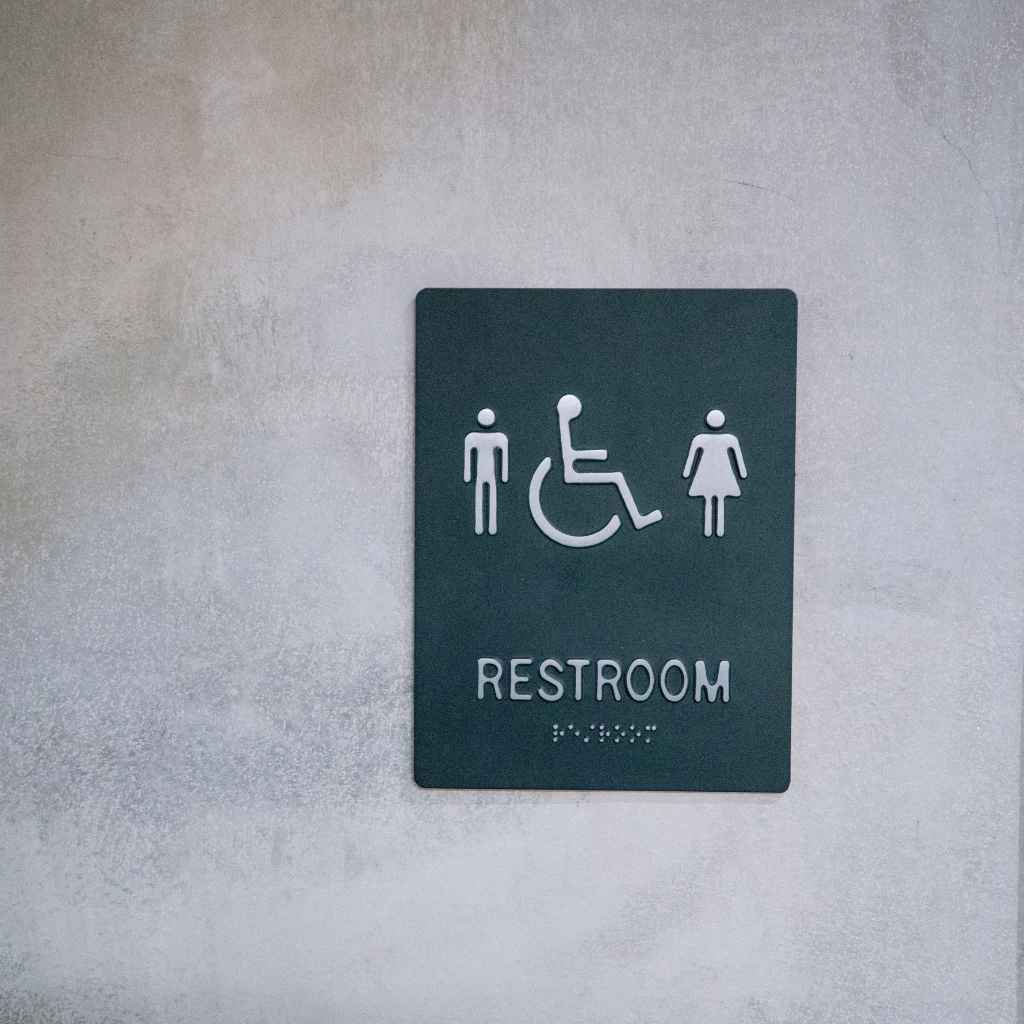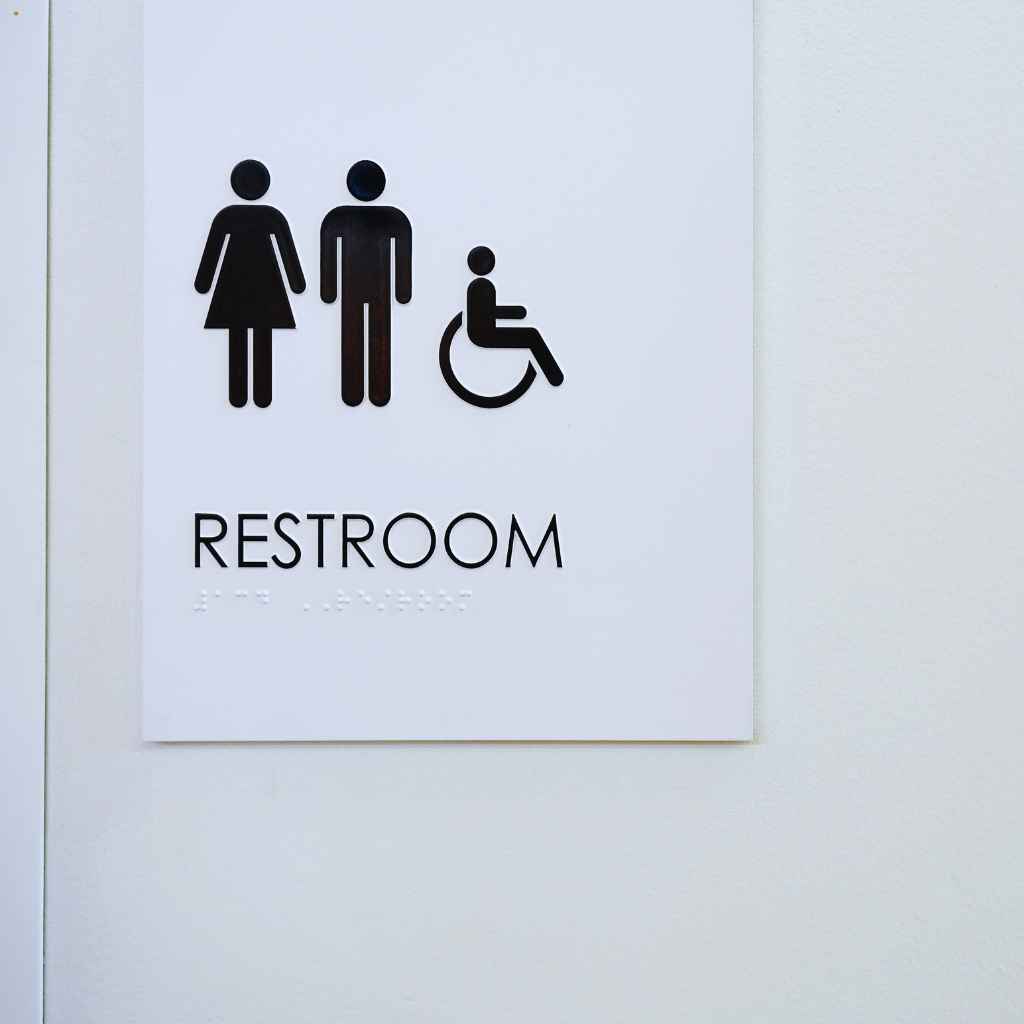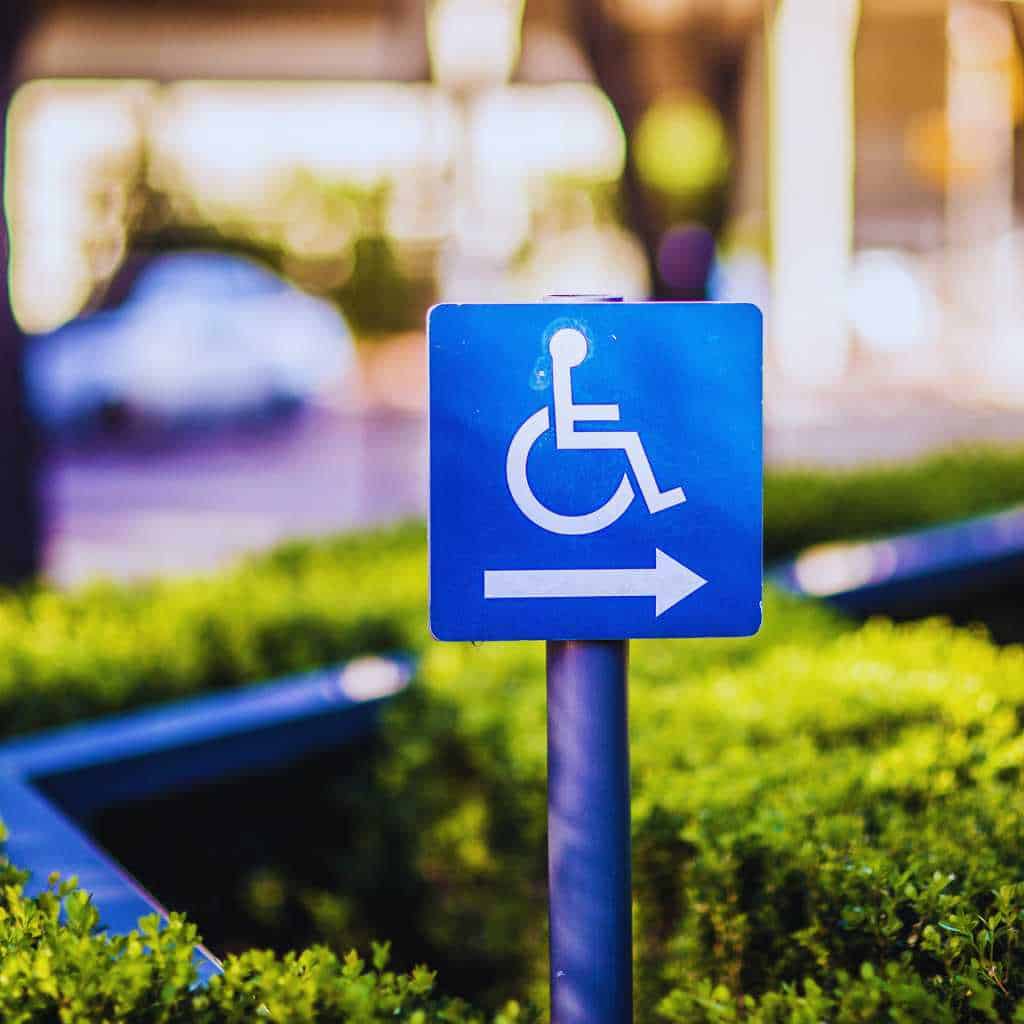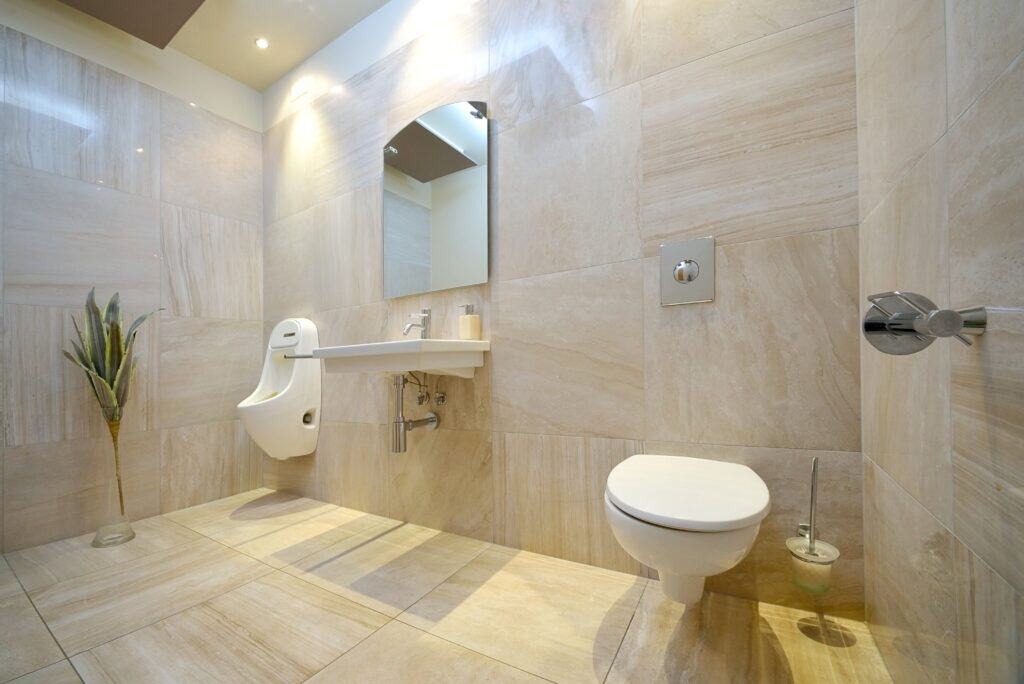7 ADA Ramp Requirements Every California Property Owner Must Know
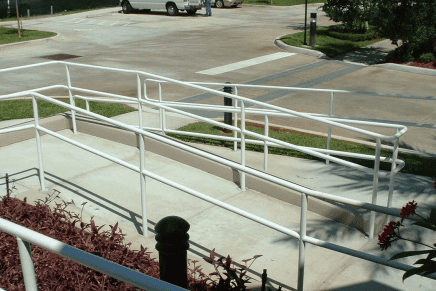
ADA ramp requirements in California refer to the design and construction standards that ensure accessibility for individuals with disabilities, particularly those using wheelchairs or mobility aids. These are governed by both federal ADA Standards (2010) and the California Building Code (CBC Title 24). The key distinction is that California enforces stricter guidelines through Title 24 and the Unruh Civil Rights Act. Failure to comply can result in significant penalties, lawsuits, and failed CASp inspections. Below, we’ll break down the 7 core ramp requirements every California property owner should understand to stay compliant and avoid costly mistakes.
What California Property Owners Should Remember About ADA Ramp Rules
- Follow the 1:12 slope rule. Any steeper, and you risk non-compliance, especially under California Title 24.
- Make sure your ramp is at least 36 inches wide. That’s clear width—not just the space between walls or railings.
- Landings are required every 30 feet or at turns. This is where many CASp inspections fail.
- Install handrails if your ramp rises over 6 inches. And make sure they’re the correct height—34 to 38 inches.
- Use edge protection. A 2-inch curb or barrier is a must to prevent wheelchairs from slipping off.
- Surface matters. Ramps must be stable, firm, and slip-resistant. Just saying “non-slip” isn’t enough.
- Keep the cross slope under 1:48. This ensures wheelchairs don’t drift sideways or tip.
Getting any of these wrong can lead to CASp violations, lawsuits under the Unruh Act, and serious accessibility issues.
What’s the legal definition of an ADA-compliant ramp?

An ADA-compliant ramp provides safe, accessible entry for individuals using wheelchairs or mobility devices, built to strict slope and width regulations under federal and California code.
How does California’s ramp code differ from the federal ADA?
- CBC Title 24 vs. 2010 ADA Standards for Accessible Design
- California-specific enforcement and lawsuits (e.g., Unruh Act)
- Real-world implication: Why “just ADA” isn’t enough in CA
The 7 ADA Ramp Requirements Property Owners Must Follow
1. Maximum Ramp Slope: No Steeper Than 1:12
A common user concern is: “Is a 5% slope too steep?”
The answer is yes. ADA and CBC require a minimum of 12 inches of horizontal run for every 1 inch of vertical rise. That’s about an 8.3% grade (1:12).
- Exceptions exist for short distances, but rarely apply in commercial contexts.
- Inspections often fail ramps retrofitted with steeper slopes due to space limits.
2. Minimum Ramp Width: 36 Inches Clear
The required width is a clear 36 inches, measured between handrails—not wall to wall.
- Common issue: property owners install handrails inside a 36” ramp, reducing the clear width and violating code.
3. Landings: Every 30 Feet and at Every Turn
Flat landings are required:
- At the top and bottom of every ramp
- Every 30 feet on long ramps
- At every change of direction
Landings must be 60 inches long and as wide as the ramp. Many ramps fail here due to insufficient space or uneven surface.
4. Handrails: Required If Rise Is Over 6 Inches
If a ramp rises more than 6 inches vertically, CBC and ADA require:
- Two continuous handrails on both sides
- Height: 34–38 inches from the ramp surface
- Handrails must return to a wall or post
Poor mounting or no returns is a red flag in inspections.
5. Edge Protection: Preventing Wheelchair Slip-Off
Ramps must have edge protection a barrier at least 2 inches high to prevent wheels from slipping off.
- This detail is often overlooked during field retrofits.
- Missing edge protection is one of the top ADA violations noted in CASp reports.
6. Surface Requirements: Slip Resistance & Stability
ADA-compliant ramps must have a firm, stable, and slip-resistant surface. CBC also expects a minimum coefficient of friction for wet and dry conditions.
- Treated concrete typically passes
- Metal ramps require special treads
Wood ramps face repeated complaints on Reddit/Quora due to weather warping or slipperiness
7. Ramp Cross Slope: Must Not Exceed 1:48
Cross slope refers to the slope across the width of the ramp (side to side).
- Max allowed: 1:48 (~2%)
- Too much cross slope causes balance issues for wheelchair users and drainage problems
Is Your Business Accessible?
Contact one of our CASp specialists to ensure your business is ADA compliant.
Common ADA Ramp Mistakes That Fail CASp Inspections
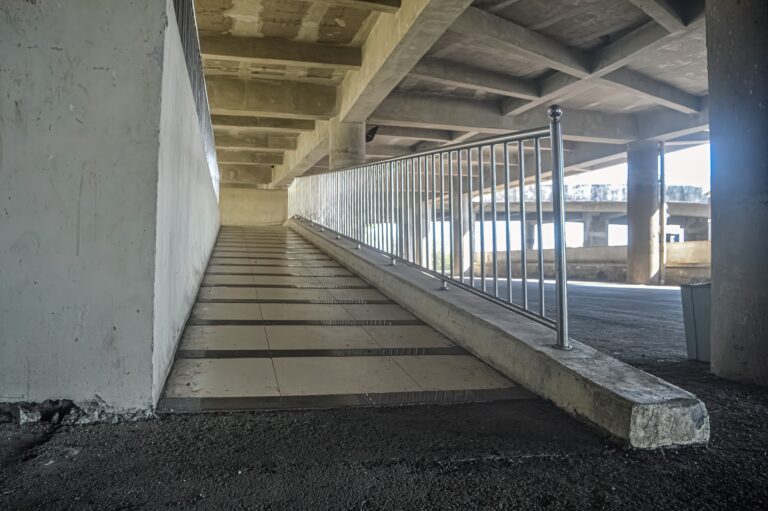
Where do most California ramps fail inspections?
- Slope too steep or uneven
- No landings or landing too short
- Handrails missing or incorrectly installed
- Edge protection not present
How can you pre-check ramp compliance before an audit?
- Book a CASp pre-inspection
- Use slope-measuring tools (apps, laser levels)
- Consult with certified ADA accessibility consultants
Who Enforces ADA Ramp Requirements in California?
Is ADA enforcement state or federal in California?
Both. The U.S. DOJ enforces the ADA. California adds state-level enforcement via:
- Division of the State Architect (DSA)
- Private lawsuits under the Unruh Civil Rights Act
What’s the penalty for non-compliance?
- $4,000 statutory damages per violation under Unruh
- Legal fees for the plaintiff
- Mandatory retrofitting
When Is a Ramp Required Under ADA?
Do all entrances need ramps?
No. Only entrances that are part of the accessible route must have a compliant ramp. However:
- The route from the parking lot to the main entrance must be accessible.
What if I have stairs and an elevator?
You still need a ramp or lift to comply with accessible route requirements.
- Multi-level buildings must have a continuous accessible path from public access points
Which building codes apply to ADA ramps in California?
- 2010 ADA Standards for Accessible Design
- California Building Code (Title 24, 2022 edition)
DSA Bulletins for clarification and updates
PRO TIP!
Design ADA ramps with a 1:12 slope ratio and include landing areas at both ends for safety, while staying updated on local codes and regulations.

Emily Johnson
Certified Access Specialist (CASp) Inspector
Answers to Common ADA Ramp Questions in California
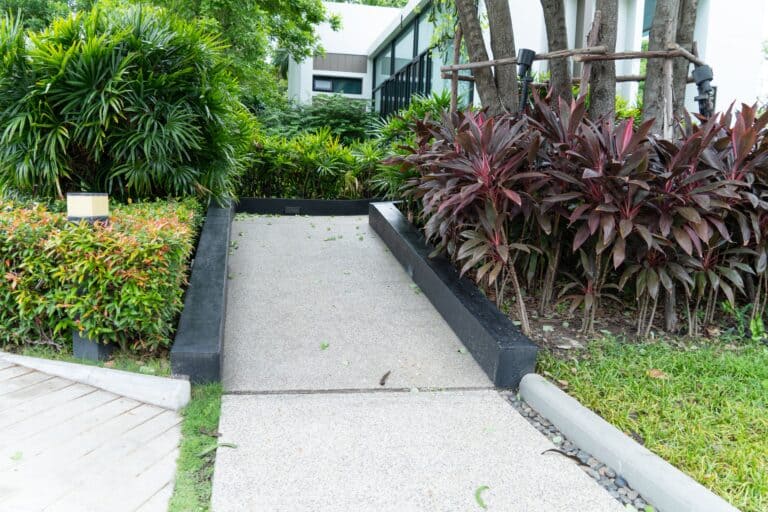
What is the required slope for an ADA ramp in California?
1:12 is the maximum slope allowed under both federal ADA and California CBC. That means for every inch of rise, you need at least 12 inches of run.
Do I need a ramp for every entrance to my building?
No, only accessible entrances require ramps. But the accessible route from public areas or parking must include a compliant ramp.
What’s the difference between ADA and CBC ramp standards?
California’s CBC is stricter than the federal ADA. For example, CBC adds specific rules on handrail placement, landing dimensions, and edge protection not detailed in ADA.
How long can a ramp be before it needs a landing?
Landings are required every 30 feet of horizontal run and at every change in direction. The landing must be flat and at least 60 inches long.
Can I build a wooden ADA ramp for my business?
Yes, but it must meet all surface and slope requirements. Many fail due to slippery finishes or warped boards that create instability.
What’s the fine for having a non-compliant ramp in California?
You could face $4,000 per violation under the Unruh Civil Rights Act, plus legal fees and retrofitting costs.
How do I prepare for a CASp inspection for my ramp?
Start with a pre-inspection by a Certified Access Specialist (CASp). Use slope measurement tools and check specs like handrail height, landing size, and cross slope.
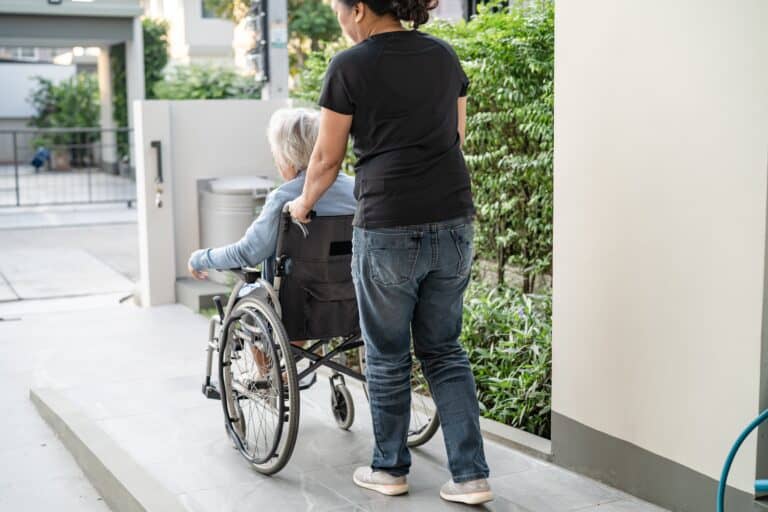
Get Your Ramp Right Before It Costs You
Ramps are one of the most visible elements of accessibility—and one of the easiest to get wrong. In California, failing to meet CBC Title 24 or ADA ramp standards can cost you thousands in lawsuits, inspection failures, and retrofits.
To protect your property and your customers, consider a CASp accessibility audit. CASpInspectors.com helps California property owners meet compliance standards with pre-inspections, documentation, and expert consulting.
Explore our ADA Parking Lot Accessibility Audits and CASp Inspections to safeguard your business.

Where can I find official guidance or get an inspection?
Avoid costly fines, get compliant today!
Enter your information below and one of our friendly CASp’s will contact you.

Written by Emily Johnson
Emily Johnson is a Certified Access Specialist (CASp) Inspector and is passionate about making spaces accessible for all. With over 10 years of experience and degrees in Civil Engineering and Architecture, she inspires others while championing ADA awareness.
RECENT POSTS
CATEGORIES
Get a free quote today!
By clicking “Submit”, you are signing up to receiving emails from us. You can unsubscribe whenever you like. SMS rates may apply.
Want To Know More About ADA Accessibility And How To Get Compliant?
Check out our blog!




